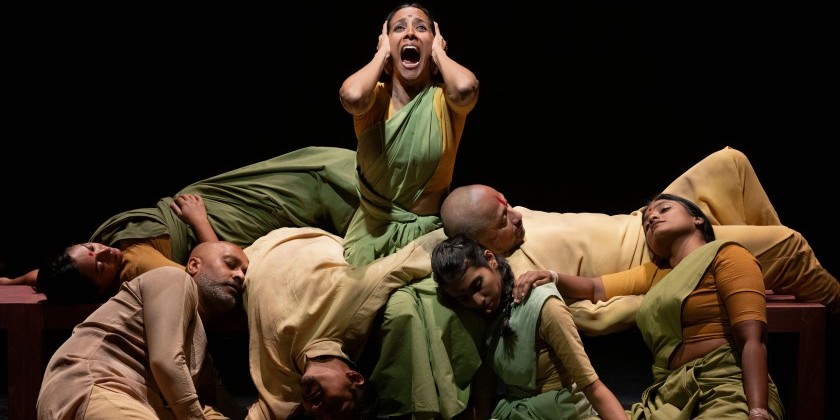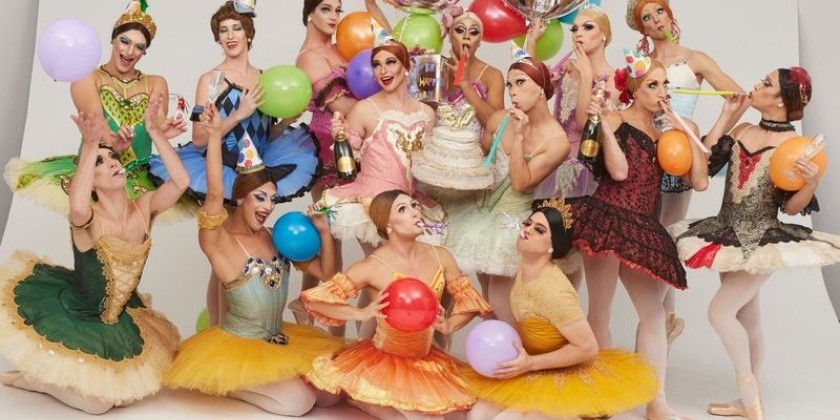IMPRESSIONS: Compagnie Hervé KOUBI's "The Barbarian Nights, or The First Dawns of the World" at the Joyce Theater

February 21, 2020
Choreography: Hervé Koubi
Performance: Compagnie Hervé KOUBI
Musical Director: Maxime Bodson
Costume Designer: Guillaume Gabriel with Claudine G-Delattre
Points of light glitter in the darkness, drawing closer. Fourteen barechested men, wearing sequin masks and scythe-shaped horns, gather together as dawn breaks. One man ascends above the shifting clump, searching for verticality, and soon more follow — it’s a birth ritual.
Primal and hypnotic, The Barbarian Nights, or The First Dawns of the World, takes root in humanity’s past and the structuring of its cultural identity. Choosing the Mediterranean basin for his setting, choreographer Hervé Koubi looks into its history and provides an alternative view to the stereotypes of the infamous “barbarians.” Often portrayed as ruthless savages, they were also free men fiercely guarding their liberties.
.jpg)
A dazzling blend of gymnastics, modern dance, Capoeira, break dancing, and ballet, the work is a feast for the eyes. The men of Compagnie Hervé KOUBI attack the space like it must be conquered with one-handed spinning handstands, barrel jumps, and twisting backflips in a mounting frenzy. They drift through it as if comprehending a mystery with contemplative walking patterns and deep backbends. Individuals yet certainly kin, they meet in fleeting moments of unison.
Slowly hinging to the floor, one man breaks the perpetual motion. The others move toward him, as if gathering around a tribal elder for a tale. The men take turns in worship, performing a series of mesmerizing head spins to form their tribe’s spiritual practice. Large poles propel the men forward into a society of war, protection, and faith that advances in technology. Native drums, medieval choir singing, and Celtic bagpipes cycle throughout, creating a sense of timelessness.

So much can be said about the company’s remarkable acrobatics, control, and physicality. But the most striking aspect resides in its absence. Unconcerned with traditional dance aesthetics — graceful lines, extensions, pointed feet, and precise articulations — the company only performs a smattering of typical dance vocabulary.
Yet their earthy power services the story. They compel the audience to engage, to enter this ancient world, to see within it their own history. Through the visceral rawness, the piece points to the beauty of universal culture linked through a common past.
.jpg)
Highlighting the sense of community, a series of flying tosses astonish in an evening of amazements. Dancers hurl themselves into a group only to be launched into the air with reckless abandon.
As the stage lights darken, the men are pulled toward a solitary light, and the return of earlier movements suggest a society reforming on past foundations. Men climb atop the shoulders of others and reach their chests to the sky, arms outstretched in surrender. One man is raised above the others before dropping, heavy and lifeless, into the waiting arms below. One by one, the men solemnly lift each other and walk into the light, passing into antiquity, ushering in the future.













